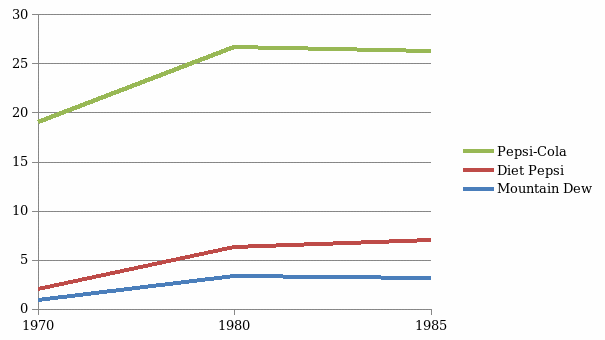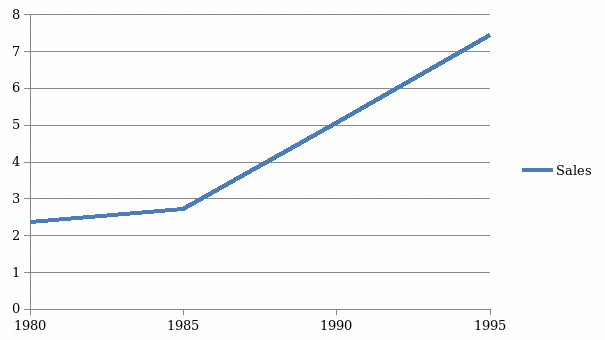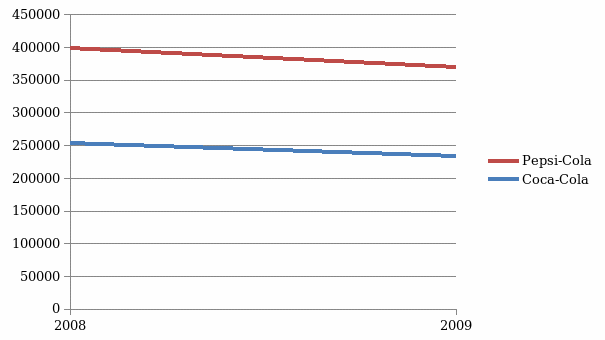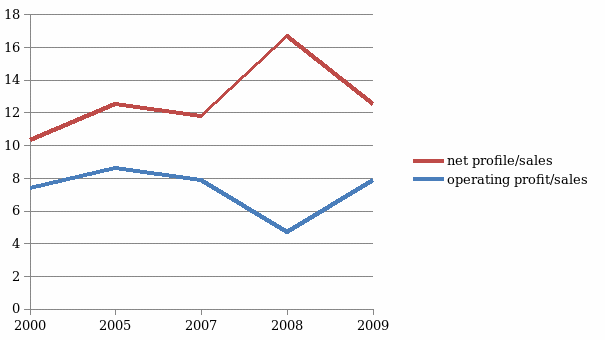Competition in the CSD market is fierce between the two Cola giants. The carbonated beverage market is an oligopoly, with only two key players on the standard board. Both companies pursue their policies through vertical product integration, non-price competition and distributions. Product pricing is also influenced by the geography of sales and the advertising aspect. Among other CSD manufacturers, it is difficult to find those whose competition has been ongoing for more than half a century and remains the subject of analysis of companies’ strategies.
Pepsi has become a severe adversary for Coke, which was the first to enter the CSD market. After losing the battle in court, Coke was forced to acknowledge Pepsi’s authenticity and look for ways to maintain its market share. Because CSD technology was pretty simple, the two companies competed for the market through marketing, changing the number and type of products, and organizing bottlers. As CSD products and demand grew, Pepsi was the first company that replaced concentrate ingredients with simpler and cheaper ones. It allowed the company to maintain market share and stimulated interest in differentiated products (figure 1).

Despite increased demand, the company was rapidly losing assets due to a lack of distributor bottlers.
Coke is the first to resort to a company unbundling strategy and move to an anchor bottler model along with widespread upgrades in equipment and product delivery methods. Initially playing with fountains, the company is developing beverage vending machines that drive overall demand and meet the demand for a healthy alternative. The renegotiation of the franchise contract allowed the company to gain flexibility and change its pricing policy in 1970s. As a result, Coke tied concentrate price changes to the consumer price index and level the playing field with Pepsi, which was already supplying unsweetened base to bottlers. In its advertising policy, Coke tried to focus on overseas. Gradually, advertising became recognized worldwide, and Coke reached a new level.
Pepsi’s strategy of focusing on the domestic market and aggressively taking over retailers with fast-food chains’ involvement led the company outpacing Coke by 1.4 percentage points in sales in 1979. From 1985 to 1995, sales of Pepsi products grew aggressively, maintaining an advantage over Coke (figure 2).

In addition to switching to an anchor model, the company ran a vigorous advertising campaign. In 1974, the Pepsi Challenge with a blind taste evaluation of competitive products in Dallas, and after its success the movement spread across the country. In addition, the company reduced the price per unit and reduced Coke’s market share. Coke tried to compete for the independent bottler, but Pepsi only built up its advantage through promotions and discounts.
Advertising has been crucial to both companies from the beginning. Coke positions itself as a family drink of typical Americans and honors the preservation of tradition. On the other hand, Pepsi tended to target young people and look for modern technologies (like replacing sugar with stevia to reduce calories). By 2009, companies’ spending on advertising reaches critical levels (figure 3).

Streamlining production processes and supporting smaller independent bottlers allowed Coke not to lose share and kept its principal subsidiary, CCE, stable. PepsiCo was also able to make financial stability by streamlining its marketing and turnover processes. In 2009, PGB maintained an advantage in several metrics: operating profit/sales and net profile/sales (figure 4).

Pepsi and Coke continue to compete on all fronts, but most important is the ability of both companies to compete fairly and maintain product quality despite changes.